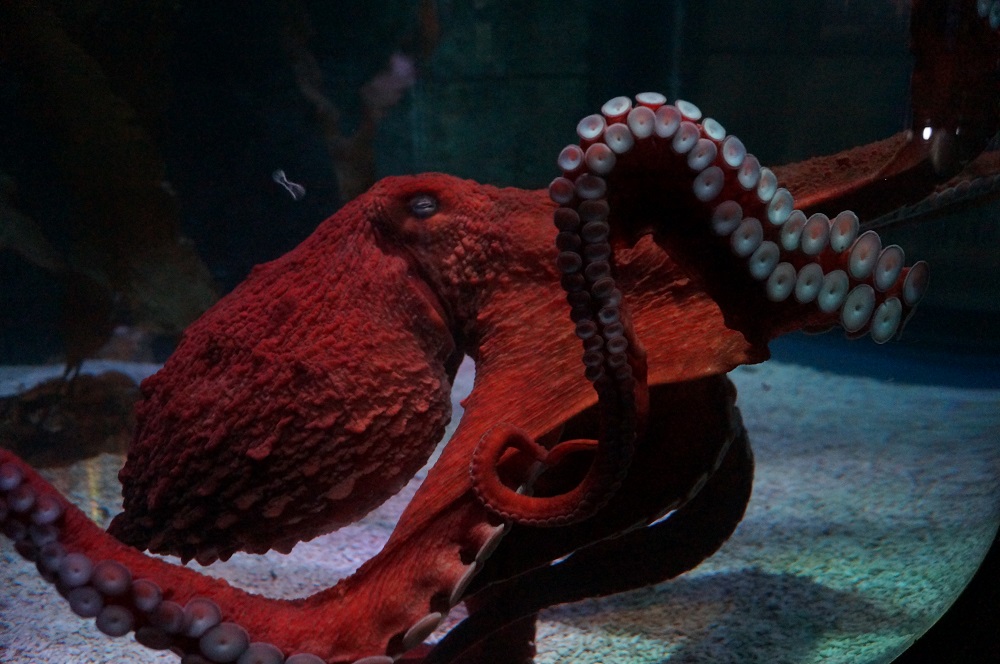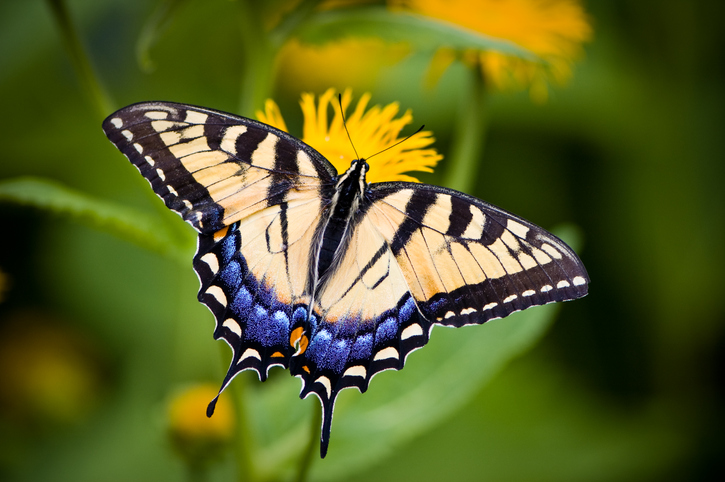We love to teach you about the exciting creatures living all around us, both big and small. So today let’s focus on the smaller animals we get to live amongst.
Ready to learn almost everything there is to know about invertebrates? Here, we’ll explain what they are, the different types, some well-known examples and, last but not least, why they’re such useful creatures.
What is an Invertebrate?
Animals that don’t have a backbone or spine are classed as invertebrates. In fact, it’s common for them to have no bones at all! They’re also all cold-blooded, meaning that they need to warm themselves up by absorbing heat from their surroundings.
Invertebrates are the complete opposite of vertebrates who have backbones and bone structures inside their bodies. One of the most obvious examples of a vertebrate is humans, but other mammals, fish, amphibians, and reptiles also fit into this category.
What’s really interesting about invertebrates is that apart from missing a backbone, they have very little in common. While some invertebrates have soft bodies, such as worms, slugs and octopuses, other types have a hard outer casing similar to armour which protects them. This casing is called an exoskeleton. For the most part, each type of invertebrate looks very different to the others, which is why it can sometimes be tricky to identify them.
Which animals are invertebrates?
Believe it or not, 97% of the world’s animals are classed as invertebrates. Even though most of them are pretty small and we might not always notice them, they’re actually much more common than some of the biggest mammals like humans, lions, and bears.
There are three types of invertebrates, which we’ll delve into below…
What is an Arachnid?
An Arachnid is an animal with eight legs, no antennae and only two body parts. Many people have a fear of these creatures because of their legs, but they’re mostly completely harmless. They can also benefit humans in lots of ways, from eating pest insects to keeping insect populations low.
So next time you see a spider, try to remember that they do more good for us than harm. Plus, we’re a lot bigger than they are, and they’re probably more frightened of us than we are of them!

Examples of Arachnids include:
- Spiders
- Scorpions
- Ticks
- Mites
Spiders
Spiders are one of the most common arachnids found all around the world, alongside being the biggest in size. More than 45,000 different species are known, from tarantulas to black widows.
Most species of spider are carnivorous, and their diets are usually filled with flies and other insects they can trap in their webs or hunt down. However, spiders can’t swallow their food as normal. Instead, they’ll inject their prey with digestive fluids and suck out the liquid from their prey. Very gruesome!
While you might think all spiders build webs, this isn’t actually true. Some can’t build webs, but they can produce silk. Just like Spider-Man, spiders will use the structures they create to help them climb or for safety so that they don’t fall. Webs can also help with hunting, catching food and laying eggs.
What is a Crustacean?
Crustaceans often have between 10-14 legs, four antennae and two body parts. Many of these animals are aquatic invertebrates, except for pillbugs (sometimes called roly-polies), who have adapted to live on land and are regularly found roaming in the dirt.
There are many exciting types of crustaceans swimming around on the shores of our seas and oceans, including crabs, lobsters, octopuses and shrimps. Since these crustaceans are all quite similar, we thought we’d give you a better understanding of the more unusual pillbug.

Pillbugs
As we’ve mentioned, this is the only crustacean that has developed the ability to live on land rather than in the water. So, what else is interesting about them?
These little grey creatures are often compared to an armadillo because both can roll into a ball when disturbed. Pillbugs are much smaller than armadillos though, making them more of a mini version.
Unlike other crustaceans, they live under leaves, mulch and rocks and are also nocturnal. They’re happiest in more humid daytime conditions, which is why you’ll usually find them hiding in damp areas.
Are insects invertebrates?
Insects are the third and final type of invertebrates, and they’re also the largest. Insects usually have six legs, two antennae and three body parts rather than two. While some might have wings, others don’t which can be confusing. The easiest way to remember is that if an invertebrate has wings, then it’s most likely an insect.
Common invertebrate insects include:
- Butterflies
- Bees
- Beetles
- Ladybugs
Butterfly
Butterflies are best known for their wings covered in beautiful colours and patterns, but it can often be forgotten that they’re part of the insect family. They also have an exoskeleton which protects their bodies.
These colourful creatures also go through the process of metamorphosis before hatching into a butterfly, although sadly, many eggs don’t make it to adulthood. Predators such as ants, wasps, spiders, and birds include butterflies in their diets.
Meanwhile, an adult butterfly’s diet couldn’t be more different. They are only able to get their nutrients by sipping on liquids from damp patches on surfaces to nectar from flowers. They have something called a proboscis, which acts like a straw to help them with this process.

Why are invertebrates important?
Invertebrates are super important for keeping the ecosystem going. This is mainly because they’re a major food source for a lot of vertebrate animals and even other invertebrates. Without them, the ecosystem would become unbalanced, other animals would lose out on their food source and many of the products and services we benefit from wouldn’t be possible.
For example, bees are one of the most important invertebrates because they produce honey and beeswax. Without a large population of bees, we wouldn’t be able to enjoy these things and use them in our lives.
Since most invertebrates are at the bottom end of the food chain, they’re a critical food source for a lot of other creatures. If they can’t provide nutrients to the creatures and animals higher up in the chain, it can cause the whole system to fall apart. This is why we need to protect our invertebrates as much as possible.
One of the most unexpected benefits of invertebrates is that many insects feed on dead animals and plants, which ends up recycling nutrients back into the soil. As a result, we get to enjoy a cleaner environment with better soil quality. Forests, crops, and other natural areas can thrive when insects are doing their bit to help.
Enjoyed learning all about invertebrates? Come along to Hastings Aquarium to wave a tentacle at our Giant Pacific Octopus! Book your tickets today.
